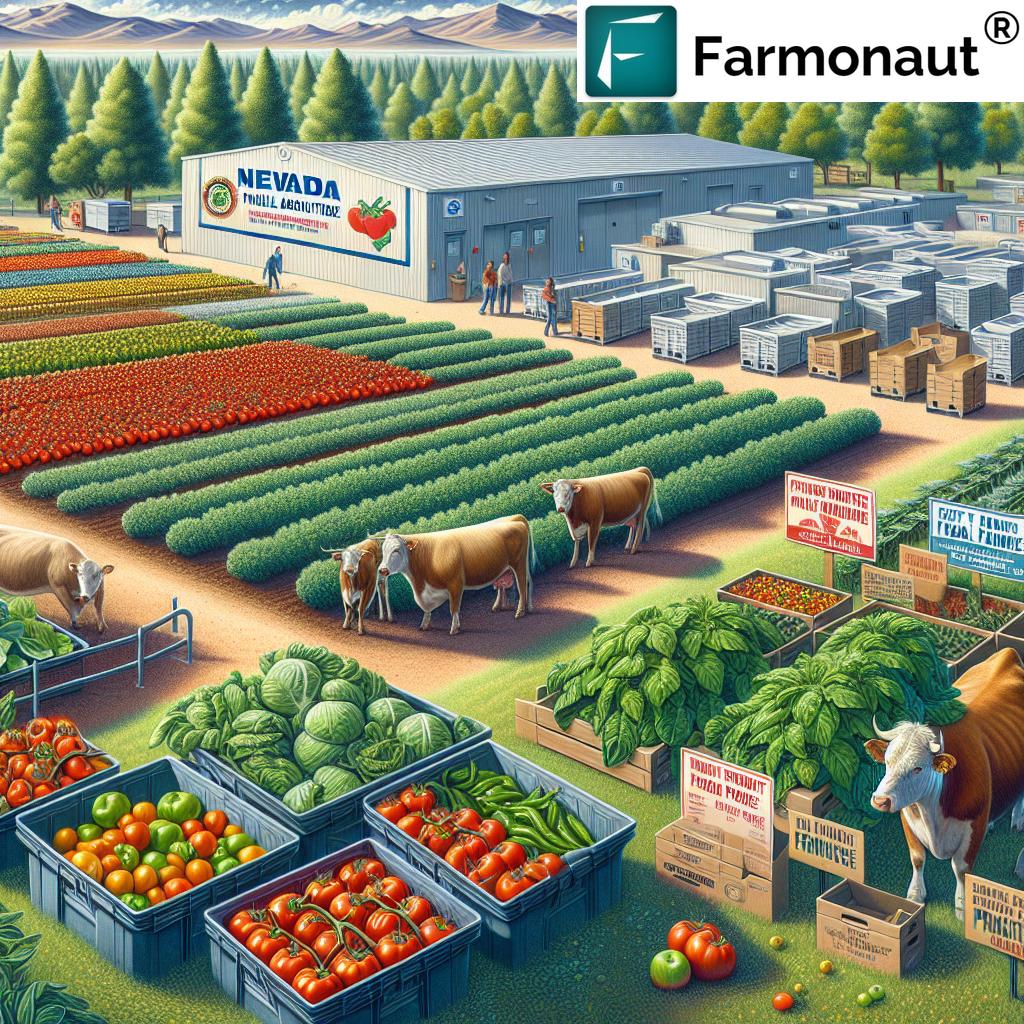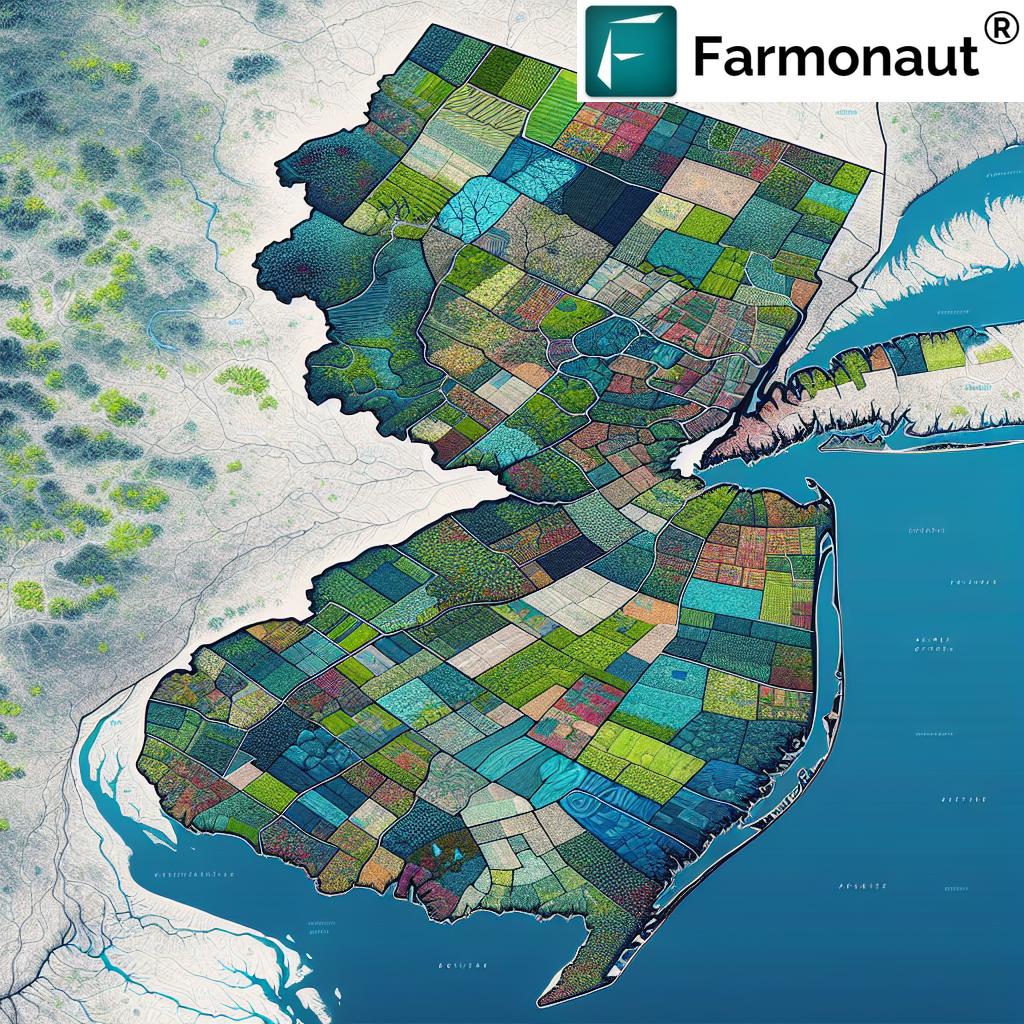Table of Contents
- Introduction: 2025 Irrigation Pump Revolution in Nampa
- Quick Trivia
- The Role of Agricultural Irrigation Pump Nampa in Modern Agriculture
- Types of Agricultural Irrigation Pumps Used in Nampa
- Comparison Table: Traditional vs Field vs Auto Irrigation Pumps
- Nampa Irrigation Pumps: Versatility and Precision in Water Management
- Field Irrigation Pumps: Powering Large-Scale Farming in Nampa
- Auto Irrigation: Transforming Agriculture Through Smart Technology
- Seamless Integration: Drip, Sprinkler & Smart Systems
- Sustainable Farming: Renewable Energy & Pump Efficiency
- Did You Know?
- Optimizing Irrigation Pump Efficiency With Satellite & AI: The Farmonaut Way
- The Future of Irrigation Pumps and Water Management (2025 & Beyond)
- Frequently Asked Questions (FAQs)
- Farmonaut Subscription Plans
Agricultural Irrigation Pump Nampa: Auto Field Guide (2025 Edition)
Quick Trivia
“Agricultural irrigation pumps in Nampa can increase water use efficiency by up to 40% with automation by 2025.”
The Role of Agricultural Irrigation Pump Nampa in Modern Agriculture
Agriculture in Nampa—and worldwide—stands at the threshold of a technological revolution. By 2025, advanced agricultural irrigation pump Nampa technologies, including field irrigation pump setups and auto irrigation systems, are reshaping the way water, one of the planet’s most vital resources, is managed. Irrigation continues to play a pivotal role in optimizing water use, boosting crop yields, and promoting sustainability across all types of farming, from smallholder plots to sprawling commercial operations.
This comprehensive guide dives deep into the evolution of agricultural irrigation pump nampa systems, exploring the latest advances, efficiency gains, and smart integration options that are setting Nampa’s agricultural sector apart in 2025.
Key Innovations Driving Water Management in Nampa Agriculture
- Advanced nampa irrigation pumps offering unmatched versatility and precision.
- Field irrigation pumps designed for energy-efficient, high-volume crop watering.
- Smart, AI-powered auto irrigation systems for remote, data-driven water application.
- Emphasis on sustainability: integration with renewable energy, precision farming and water-saving technologies.
For those looking to integrate advanced agricultural monitoring into their irrigation setup, we recommend exploring the Farmonaut Satellite & Weather Data API. This API enables developers and agronomists to access real-time satellite insights for water management and crop advisory, seamlessly supporting field irrigation pump and auto irrigation systems in Nampa and beyond.
To dive deeper into how to implement this in your systems, check the Farmonaut API developer documentation.
Types of Agricultural Irrigation Pumps Used in Nampa
Agricultural irrigation pump Nampa options for 2025 can be classified into three primary technological categories, each with unique operational, efficiency, and sustainability attributes:
- Traditional Pumps (e.g., manual or basic electric pumps): Traditionally used for water transport from wells, rivers, and reservoirs with basic on/off control.
- Field Irrigation Pumps: Electric or diesel-driven units, optimized for high-flow, energy-efficient large area irrigation cycles—crucial for cereals, vegetables, and vast farmland.
- Auto (Automated/Smart) Irrigation Pumps: Highly integrated, IoT-enabled, often solar-assisted solutions, with AI and data analytics guiding precise water application. These pumps are designed for maximum resource efficiency and sustainability in 2025.
The choice not only influences operational processes and costs, but also the sustainability and future-readiness of a farm. Use the table below for direct comparison and discover which solution meets your 2025 farming needs.
Comparison Table: Nampa Traditional, Field & Auto Irrigation Pumps (2025)
| Pump Type | Technology (Manual/Electric/Smart) |
Estimated Efficiency Increase (%) | Estimated Water Savings (%) | Initial Cost Range (USD) | Maintenance Needs | Compatibility w/ Sustainable Farming | Projected Yield Boost (%) |
|---|---|---|---|---|---|---|---|
| Traditional Pump | Manual/Electric | 10-20% | 0-15% | $600-$2,000 | Moderate | Limited | 5-10% |
| Field Irrigation Pump | Electric/Diesel (w/ VFD tech) | 25-35% | 20-30% | $2,500-$7,500 | Low-Moderate | Good (w/ solar, drip compatibility) | 10-18% |
| Auto (Smart) Irrigation Pump | Smart/Electric/Solar/IoT-Enabled | 35-50% | 30-60% | $5,500-$15,000 | Low | Excellent (integrates AI, sensors, apps, solar) | 18-28% |
*All values are estimated for Nampa and comparable agricultural markets in 2025, depending on scale, setup, and smart integration. Cost ranges indicated are for typical farm installations (excluding major infrastructure upgrades).
Agricultural Irrigation Pump Nampa: Versatility and Precision in Water Management
Nampa’s agricultural sector leads by example in embracing pumps characterized by robust design, adaptability, and precise water delivery. The agricultural irrigation pump Nampa model for 2025 is not just about moving water—it’s about optimizing every drop for efficiency, resilience, and increased yields.
Why Nampa Irrigation Pumps are Gaining Prominence
- Versatility: Capable of handling varying flow rates and pressures according to crop stage, soil condition, and local weather.
- Precision Delivery: Pumps synchronize with data-driven scheduling/monitoring for highly targeted water application.
- Material Innovation: Use of corrosion-resistant materials and energy-efficient motors extend operational lifespan and reduce frequency of costly maintenance cycles.
- Modular Integration: Easily fits within modern drip and sprinkler setups, as well as smart irrigation controllers for seamless automation.
Due to climate change and water scarcity concerns in many regions, the role of efficient nampa irrigation pumps is more critical than ever in safeguarding food security through sustainable, resilient farming practices in 2025.
Field Irrigation Pump: Powering Large-Scale Farming in Nampa
The field irrigation pump is specifically engineered to serve extensive farmlands—an increasingly common sight in Nampa. Their ability to operate continuously, moving large water volumes efficiently, is indispensable for staple crops such as cereals and vegetables, ensuring a constant supply of moisture throughout all growth cycles.
Features of Field Irrigation Pumps
- High-Volume, Low-Energy Processes: Achieved via variable frequency drive (VFD) systems, which dynamically adjust pumping speed to the real-time demand of the field or crop.
- Integration with Solar Power: Reduces fossil fuel dependency, cuts operational costs, and enables pumping even in remote, off-grid areas.
- Durability for Harsh Conditions: Designed to perform reliably in challenging environments, thanks to corrosion-resistant components and robust electronics.
- Remote Monitoring and Control: Modern field irrigation pumps often come with IoT support, providing status and usage updates, allowing for predictive maintenance, and facilitating adjustments from a central dashboard or a mobile device.
- Compatibility with Farmonaut Carbon Footprinting: To monitor and minimize the environmental impact of high-capacity pumping, carbon footprint monitoring tools can help ensure compliance and sustainability—an important consideration for large operations in 2025.
Optimal field irrigation pump management also involves advanced preventive maintenance schedules, which can be further enhanced with remote satellite insights, helping to extend lifespan and reduce costs.
Auto Irrigation: Transforming Agriculture Through Smart Technology in Nampa
What Is Auto Irrigation?
Auto irrigation systems take the guesswork out of water management. By combining automation, sensors, and the Internet of Things (IoT), these pumps optimize every irrigation cycle—ensuring the exact amount of water is delivered where and when it’s needed.
- Soil Moisture Sensors: Collect real-time data, triggering irrigation only when the soil moisture levels drop below optimal thresholds.
- AI-Driven Scheduling: Leverages environmental data, predicted weather, and plant growth stages so water usage is never wasted—crucial for drought resilience in 2025.
- Remote Monitoring: Farmers can adjust schedules, resolve alerts, and monitor pump status via mobile apps or web dashboards—anytime, anywhere.
- System Interoperability: Easily integrates with nampa and field irrigation pump hardware, supporting phased technology upgrades without the need for a full system overhaul.
- Sustainability and Traceability: Record-keeping is automatic, supporting traceability for food traceability documentation and compliance with best agricultural practices.
Automation is not just about convenience—it’s about unlocking new levels of efficiency and sustainability in Nampa’s farming sector.
Seamless Integration: Drip, Sprinkler & Smart Irrigation Systems
The true power of agricultural irrigation pump nampa systems is realized when paired with efficient drip or sprinkler networks. This enables precise application of water according to crop type, soil condition, and current weather patterns—critical for maximizing yield and minimizing waste in 2025.
- Drip Irrigation: Directs water directly to plant roots, optimizing usage and reducing evaporation losses. Well-suited to fruit, vegetable and field row crops in semi-arid Nampa regions.
- Sprinkler Irrigation: Uses overhead spray to efficiently irrigate cereals, pastures, and broad-acre crops. Compatible with both fixed and mobile setups powered by field pumps.
- Smart Integration: Auto irrigation controllers allow for scheduling and dynamic operation, integrating data from Farmonaut’s large scale farm management tools to boost operational efficiency and field-wide coordination.
Smart Fleet & Operational Management
For farmers managing multiple pumps, vehicles, or field machines, Farmonaut offers satellite-aided fleet management tools. These services streamline logistic operations by tracking assets, optimizing energy consumption, and ensuring timely pump maintenance for uninterrupted irrigation cycles.
Financial security is another critical concern in 2025. For streamlined crop insurance and lending options, advanced field monitoring provided via satellites can validate claims and expedite loans. We suggest leveraging crop loan and insurance verification solutions to further enhance operations and minimize risks.
Did You Know?
“Automated field irrigation systems may boost crop yields by 25% in technologically advanced Nampa farms by 2025.”
Sustainable Farming: Renewable Energy & Pump Efficiency in 2025
Sustainability is no longer a buzzword—it’s a mandate for agricultural operations worldwide. Field irrigation pump and auto irrigation solutions in Nampa are increasingly powered by solar energy, significantly reducing reliance on fossil fuels. This shift results in lower operating costs, reduced carbon footprints, and increased resilience for remote farming communities.
- Solar-Powered Pumps are ideal for off-grid locations, supplying large volumes of water while slashing energy bills and maintenance costs.
- Using Farmonaut’s carbon footprinting solutions, farmers can quantify their emissions, receive tailored advice for mitigation, and align with the latest sustainable agriculture benchmarks.
- Integration with blockchain-based traceability—such as Farmonaut’s traceability platform—helps document the journey of farm products from field to market, supporting eco-conscious branding and regulatory compliance.
Optimizing Irrigation Pump Efficiency With Satellite & AI: The Farmonaut Way
As the backbone of efficient agriculture, Nampa irrigation pumps deliver maximum value when optimized by actionable satellite data. At Farmonaut, our mission is to make satellite-driven insights affordable and accessible to farmers, businesses, and governments worldwide, enabling smarter water management and precision crop support across diverse climatic and soil conditions.
- Real-time Monitoring: Our web/mobile platform delivers NDVI-based crop health, soil moisture, and resource management updates—helpful for scheduling optimal irrigation cycles and alerting to emerging issues before they affect yields.
- AI-Based Advisory: The Jeevn AI System analyzes satellite inputs to suggest tailored strategies for water-efficient farming in Nampa and comparable geographies, reducing water waste and boosting yields.
- Transparent Traceability: Secure your value chain by integrating blockchain solutions, offering traceability and compliance for field crops and high-value vegetables.
- Environmental Impact: Use our carbon footprint tracking features to ensure growing operations stay eco-friendly and aligned with regulatory/market requirements.
- Platform Accessibility: Manage pumps, fleets, and irrigation schedules from anywhere using our Android, iOS, or browser app—empowering more informed decisions and rapid response to changing field conditions.

The Future of Irrigation Pumps and Water Management (2025 & Beyond)
As we look beyond 2025, the future of agricultural irrigation pump nampa and the broader water management landscape will be shaped by ongoing technological advancements and an increased emphasis on sustainability and food security.
What Can We Expect?
- AI-Enhanced Systems: Machine learning will increasingly drive predictive analytics for water demand, budgeting, and irrigation scheduling, reducing costs and maximizing operational efficiency.
- Increased Renewable Integration: Solar, wind, and even hybrid renewable setups will continue to power more pumps, especially in remote or underserved areas.
- Sustainable Materials: 2025 pumps and accessories will use recycled, durable, and eco-friendly materials, further minimizing agriculture’s environmental footprint.
- Greater System Interoperability: The modular design will allow the seamless interchange of traditional, field, and smart pumps—making future upgrades smoother for farmers.
- Blockchain for Compliance and Traceability: With increasingly strict food safety and environmental regulations, digital documentation of every step—from water withdrawal to harvest and delivery—will become essential.
- Policy Support: Government subsidies and training will boost adoption of advanced irrigation systems, ensuring even smallholders can compete and thrive in evolving markets.
Our commitment at Farmonaut is to ensure farmers, businesses, and government users enjoy timely, actionable data to support these next-generation efficiency and sustainability gains in their irrigation and crop management practices.
Farmonaut Subscription Plans
Access satellite-powered crop, water, and resource management for your Nampa farm or agribusiness—choose the Farmonaut plan that suits your needs:
Frequently Asked Questions (FAQs)
What is the main advantage of upgrading to auto irrigation systems in Nampa?
Auto irrigation systems in Nampa provide automated scheduling and sensor-based water application, reducing labor, increasing efficiency, and enabling optimal water use. This leads to up to 40% increased water efficiency and substantial crop yield boosts by 2025.
How do field irrigation pumps enhance large farm productivity?
Field irrigation pumps deliver high water volumes efficiently across spread-out farmlands. When equipped with VFD technology and real-time monitoring, they boost energy savings and reduce operational costs while ensuring crops (like cereals and vegetables) receive adequate water.
What role do satellite and AI technologies play in agricultural irrigation pump management?
Satellite and AI offer real-time updates on soil moisture, crop health, and weather, empowering data-driven decisions for optimal irrigation scheduling, predictive maintenance, and integrated sustainability.
Is solar power sufficient for automated pumps in Nampa?
Yes, solar technology in 2025 is advanced enough to power modern auto irrigation pumps efficiently, making them suitable for off-grid as well as grid-connected farms in and around Nampa.
Can I integrate new smart pumps with older drip or sprinkler systems?
Most auto irrigation pumps are designed for seamless integration and can work with existing drip or sprinkler systems, making phased upgrades quick and cost-effective.
How do Farmonaut tools support irrigation efficiency and sustainability?
Our platform delivers satellite-driven monitoring, AI advisories, and carbon reporting, assisting Nampa farmers in maximizing water use efficiency, improving yields, tracking environmental impact, and reducing costs through smart resource management.
Where can I learn more or download the Farmonaut mobile app?
Click the image buttons below to download the latest version of our Android or iOS app, or visit the Farmonaut web platform.


What is the typical ROI when upgrading from conventional to auto irrigation pumps?
By 2025, Nampa farms using smart auto irrigation pumps often report ROI within 1-3 years, thanks to higher crop yields, reduced labor, and energy savings.









